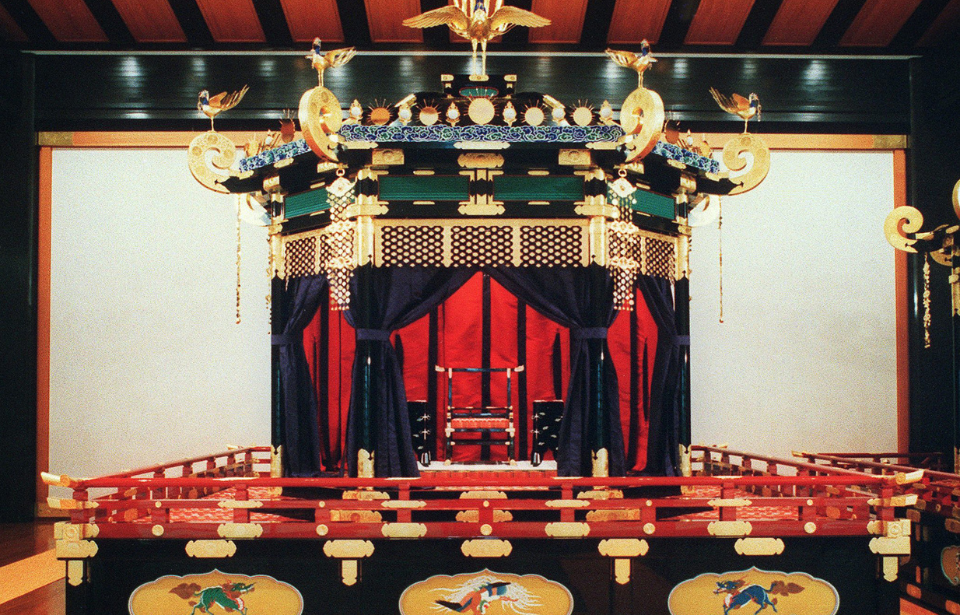The Chrysanthemum Throne is both the physical throne and the representation of the Japanese imperial family. It describes a long ancestry connected to divine power. Those who have led the monarchy are considered the direct bloodline of ancient ancestors. For years, only men have been allowed to ascend to the position of emperor. But with the number of eligible male heirs dwindling, the conversation surrounding women becoming emperors has been discussed.
What is the Chrysanthemum Throne?
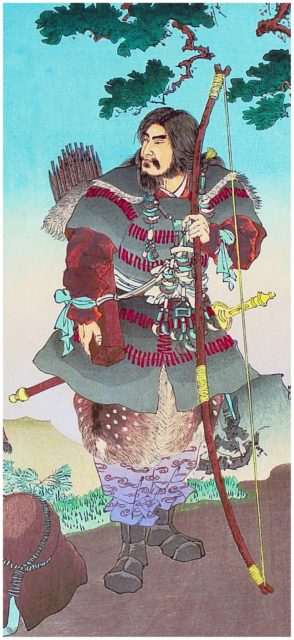
The Chrysanthemum Throne has multiple definitions. It is the actual throne upon which the emperor of Japan is ceremoniously crowned. It also stands for the imperial lineage of the Japanese monarchy. Currently, the emperor serves as “the symbol of the State and of the unity of the people” in Japan as a constitutional monarch.
The Japanese monarchy is said to date as far back as 660 BC, with the legendary Emperor Jimmu being the first occupant of the Chrysanthemum Throne. In Japanese mythology, Jimmu is believed to have been a direct descendant of the sun goddess Amaterasu, giving the monarchy a direct line to the female deity.
The Yamato Dynasty, directly descended from Emperor Jimmu, is the oldest continuing hereditary monarchy in the world.
Features of the Chrysanthemum Throne
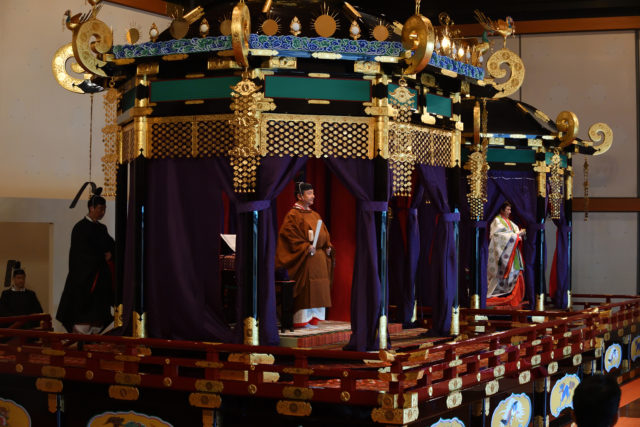
The chrysanthemum flower was introduced to Japan in the 8th century during a time when the country sought to emulate China in its refinement and sophistication, and came to become the official emblem of the imperial family.
In terms of the physical Chrysanthemum Throne, it is known as the Takamikura and is kept in the Kyoto Imperial Palace. It is the oldest surviving throne used by the monarchy in Japan. This particular throne was built in 1912 for the enthronement ceremony of Emperor Taisho, who became Japan’s 123rd emperor.
The vibrant Chrysanthemum Throne sits on an octagonal dais inside Kyoto Imperial Palace, its floor raised five meters above the ground. A curtain lines the structure, separating it from the rest of the room. Additional privacy is achieved through a sliding door that can hide the emperor from view. The door is adorned with paintings of 32 celestial saints, keeping in line with the grand appearance of the Chrysanthemum Throne.
The male line continues in the imperial system
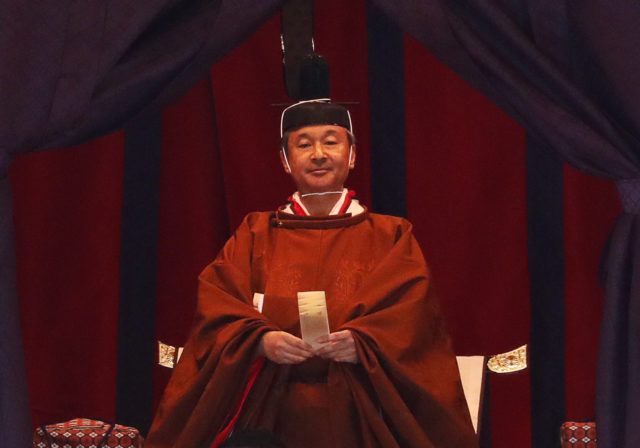
Following the abdication of Emperor Akihito on May 1, 2019, the new emperor, Emperor Naruhito, ascended to the throne. The ceremony took place the following day at the Chrysanthemum Throne. During the ceremony, the emperor was presented with two of Japan’s imperial regalia. The first was the Kusanagi sword, which represents valor, and the second was the Yasakani no Magatama jewel, which represents benevolence.
A third imperial regalia item, the Yata no Kagami mirror representing wisdom, was not presented on that day as it is housed in the Ise Grand Shrine in Mie Prefecture, known as the most important Shinto shrine. At the ceremony, Naruhito stated, “I swear that I will act according to the constitution and fulfil my responsibility as the symbol of the state and of the unity of the people.”
A panel confirmed women still cannot ascend to emperor
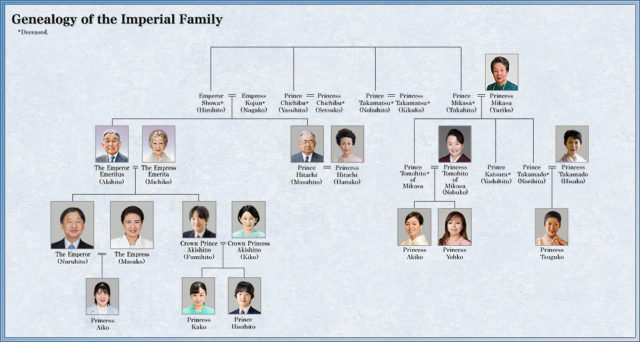
During the recent exchange of power, the recurring question of who would succeed as emperor when there is a shortage of male heirs was posed. During the early Meiji era, an edict was passed that stated that only men could become emperors. This is viewed as important in keeping the imperial lineage pure.
Allegedly, the male-to-male imperial lineage has remained intact in Japan for 2,600 years. When a woman of royalty marries, she loses her royal status which makes her male child ineligible for the throne. One of the main arguments against a woman ascending to the throne is that a reigning empress might marry a commoner, diluting the imperial lineage.
Under this imperial system, the current line of succession has left only three eligible male heirs to ascend to the Chrysanthemum Throne. Alternatively, eight of the 13 members of the imperial family are female. As concerns continue for the dwindling patrilineal line, a panel was established to look into the rule that prevents women from becoming emperor.
Progressive parties argue that not only should women be allowed to ascend to the throne, but they should also be able to start their own imperial houses so as to increase the pool of eligible heirs. However, traditional parties believe that the reintegration of tributary branches of the royal family that were exiled during the postwar period would expand the pool of eligible heirs without diluting the imperial lineage.
Ancient Japan was a matriarchal society
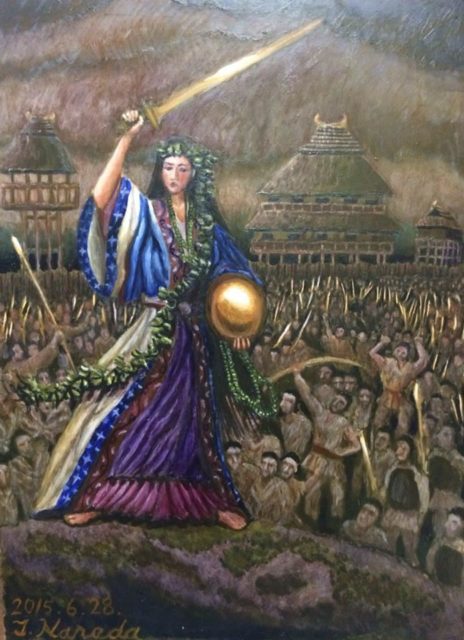
For now, women will continue to be unable to ascend to emperor. However, women have already taken a spot on the Chrysanthemum Throne in different periods of Japanese history… at least eight times! Ancient Japan was a matriarchal society, with women taking leadership roles up until the end of the 7th century. It was the Taika reform that changed this, as Japan adopted a social system from China following the reign of Empress Kōgyoku.
Although she was not titled emperor or empress, when Queen Himiko ruled over 30 states from approximately 180 AD to 248 AD, she was a powerful leader who unified parts of the country. The first known woman to become empress was Suiko. She ruled from 596 AD to 628 AD.
More from us: A Japanese Princess Married Her Sweetheart and Now Works at a NYC Museum
The women who ascended to the Japanese throne all had this characteristic in common: none of them got married. However, each of them was followed by men becoming emperor, which maintained the male lineage.
